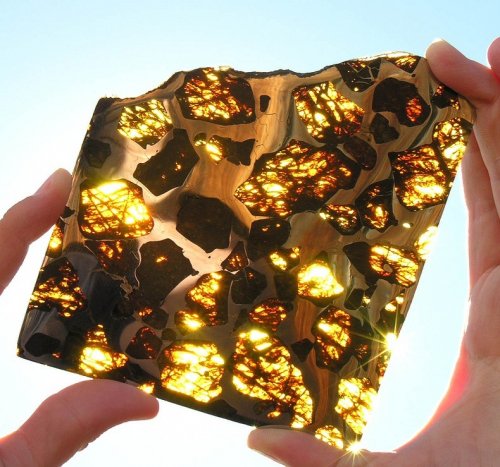

The particle becomes wrapped in a glowing sheath of heated air and vaporized material boiled off its own surface. As a particle enters Earth's atmosphere, it collides with gas atoms and molecules. Most of the meteors seen during one of the annual showers arise from fluffy particles not much larger than sand grains.

A meteor shower occurs on the date in the year when Earth passes nearest to the band of material associated with a comet's orbit. Concentrated initially near the comet, the debris diffuses along each stream's orbit and eventually forms a thin band of material that Earth encounters every year. The ejected streams become more diffuse with age and lose their individual identities. Each particle receives small accelerations from forces other than gravity, and these orbits become increasingly modified over time. The particles composing the stream orbit the Sun in slightly different paths than the source comet. At each pass near the Sun, the comet ejects a stream of material. The resulting jets of evaporating gases carry with them any solid matter mixed with the original ice.

A comet becomes visible only during its closest approach to the Sun, when areas on the comet's icy surface become warm enough to evaporate. Astronomers now consider comets to be "dirty snowballs" consisting of a mixture of dust and frozen gases. By the 1860s, it had become clear that many meteor showers were annual - including the normally placid Leonids, which produced the big storm - and that they were somehow related to comets. The science of meteor astronomy began in 1833, when a storm of 60,000 meteors an hour shocked the world. If a bright star happens to lie near the radiant, the shower may take the star's name - for instance: the Eta (η) Aquarids. For example, during the Perseid shower in August, meteors seem to streak from a point in the constellation Perseus. Usually, meteor showers take the name of the constellation from which the meteors appear to radiate. This illusion is an effect of perspective, just as a roadway seems to converge in the distance.

The meteors that appear during a meteor shower seem to radiate from one point in the sky. And every now and then, we're treated to a truly spectacular display in which thousands of visible meteors can be seen for a brief period. Concentrations of material within the swarms may produce better-than-average displays in some years, with rates of hundreds per hour. The result is a meteor shower, during which observers may see dozens of meteors every hour. Several times during the year, Earth encounters swarms of small particles that greatly enhance the number of meteors. These are sporadic meteors their source bodies - meteoroids - are part of the dusty background of the inner solar system. Under a dark sky, any observer can expect to see between two and seven meteors each hour any night of the year. Now and then, a meteor truly will light up the night, blazing brighter than Venus - and although rarely, even brighter than the Moon - leaving in its wake a dimly glowing trail that may persist for minutes. Many meteors are quick flashes, but some last long enough for us to track their brief course across the sky. This is a meteor, a glowing trail caused by the incineration of a piece of celestial debris entering our atmosphere. Those spending enough time under the night sky eventually will see a "shooting star," a streak of light that flashes across the sky in less than a second.


 0 kommentar(er)
0 kommentar(er)
